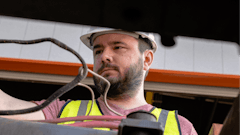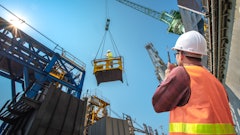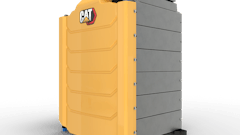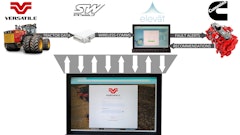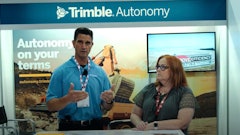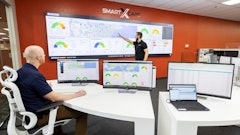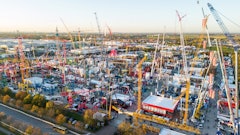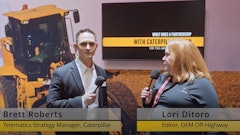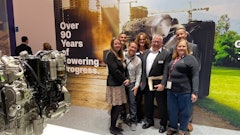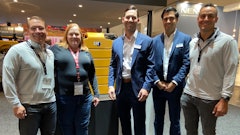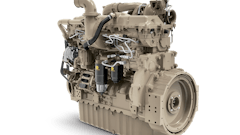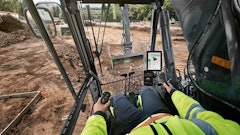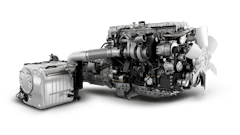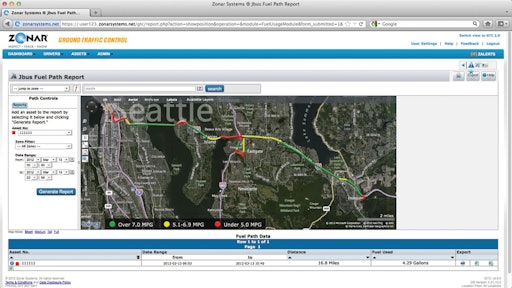
Today, global positioning systems (GPS) and telematics technologies are as commonplace in heavy-duty vehicles as a steering wheel. The two systems typically work hand in hand to provide operators and fleet managers with a variety of information such as navigational guidance and vehicle performance. And as the technologies have progressed, so has the amount of information they can provide.
Telematics systems— which send, receive and store information through telecommunication devices—have grown to include information about fuel usage, driver behavior and route planning. This enables everyone within a company from the vehicle operator to the fleet manager to get all of the information they need from a single system. “Customers are truly looking for telematics to do complete monitoring of the vehicles and driver behavior,” says Mark Sargent, Director, Solutions Engineering at Telogis Inc., Aliso Viejo, CA. With all of this information fleets can better manage their operations to be more efficient.
How telematics systems receive and send information has expanded, as well. In early 2012, Zonar, Seattle, WA, released its V3 telematics platform, an updated version of its core communication technology, which utilizes 3G networks and Wi-Fi to provide users with immediate vehicle reporting. V3 collects data directly from a vehicle’s engine control module (ECM), Zonar hardware and GPS readings and transmits that data to the company’s web-based Ground Traffic Control application where fleet, operations and maintenance managers can all access the vehicle information. (Visit oemoffhighway.com/10798397 to learn more about the V3 platform.)
GPS technology has grown as well to provide fleets with additional information beyond route navigation such as vehicle location data and precise vehicle operation. mineAPS Drill from Automated Positioning Systems (APS), headquartered in Archerfield, Australia, uses GPS and other global satellite systems to help make drilling safer and more accurate for vehicle operators within the mining industry. Satellite information fed directly to the operator provides immediate details about the terrain and enables the operator to make an informed decision about how to accurately drill in that location, or quickly find a safer location to drill.
Currently mineAPS Drill uses GPS, the satellite system owned and operated by the United States, and the Russian GLONASS system. However, APS would like to make use of additional satellites such as those owned by Europe and China to further enhance the drill accuracy of mineAPS. When mining equipment using mineAPS is working in deep open pit mines and close to a high wall, sky visibility to the GNSS (global navigation satellite system) receiver is limited and thus accuracy is reduced. “The use of multiple GNSS systems that complement each other allows our receiver to see multiple satellites and obtain a high accuracy even if we have a limited view of the sky,” says Dush Wimal, CEO of APS.
Helping improve vehicle efficiency
Increasing fleet efficiency, both for cost and environmental reasons, continues to be a high priority for customers, which is why many telematics providers are continually developing new features for their platforms to assist with this goal. Monitoring fuel economy has become one of the most commonly added features.
Early in 2012, Zonar added a new sampling methodology to its telematics platform to enhance the measurement of fuel consumption. According to Mike McQuade, Chief Technology Officer at Zonar, the high density fuel logging system captures fuel usage in half liter increments, as well as speed, engine RPM and cruise control usage to provide fleet operators with an accurate picture of how driver behavior and various routes are affecting fuel use. “Managers can identify areas along the route with low fuel economy and adjust accordingly,” says McQuade. He adds that with this feature fleets can fine tune their fuel savings by simulating fleet variables, viewing estimated fuel savings with improved driver efficiency and compare driver scores to use as a tool for coaching drivers to use techniques which optimize performance and fuel economy. Providing that data to OEMs can help them with training materials as well as give them insight into how different operators use the equipment.
Telogis Dashboard helps customers track fuel use through miles per gallon monitoring. Information collected from a customer’s vehicle is compared to other vehicles with the same engine and transmission types to identify any commonalities or deviations based on factors such as driver performance or the vehicle not functioning as it normally should. “Telogis Dashboard allows us to look at this data over any period of time that you want,” says Sargent. “You can trend it over time and see if there is improvement. We can [completely] customize however a customer wants to measure this data.”
Open platforms
One of the biggest challenges facing the GPS and telematics industry is the incompatibility of systems. Many operations today use several types of systems and tools to manage their daily activities, however, most of them do not communicate with one another. “The need for these vital systems to integrate seamlessly and be able to produce single reports is greater than ever,” says Wimal.
To better accommodate this need for interacting systems, McQuade says the GPS and telematics industry is shifting towards the development of open platforms. Zonar’s fleet telematics platform has been an open system since the company began developing it in 2001 due to the value an open design can bring to companies. With an open platform, a telematics system can easily be integrated with other systems customers may be using as well as enable them to tailor the system to their individual needs. “The shift towards open platforms in the GPS/Telematics industry presents unique challenges for the previously closed-off and proprietary telematics systems,” says McQuade. “Those who do not move toward open platforms with capability for third party apps will fall behind similar to the decline of feature phones in the cellular industry.”
In October 2012, Zonar released its 2020 portable tablet (visit oemoffhighway.com/10814246 to learn more about the tablet) which features an open Android platform. Though the tablet already comes equipped with telematics features such as electronic inspections, instant driver performance feedback and fuel efficiency metrics, the open platform allows users to add other features created by third-party developers that will enable an increase in efficiencies because the tablet can be customized to the users’ individual needs. “Open telematics platforms drive value and efficiency which generates profitable returns for shareholders,” says McQuade. “The trend towards open platforms will drive innovation, cost competitiveness and investment into the telematics industry.”
As a telematics provider for the mining industry, APS sees the importance of developing open and flexible products that can easily operate with the many other systems and tools its customers are using. Wimal says the company is continually working to maximize the integration capabilities of its products because of how important it is to improving customers’ vehicle efficiencies and monitoring. “We are seeing [an] increased effort from some of the suppliers and technology providers to integrate with other systems,” says Wimal. “Yet some of the more traditional suppliers still only provide locked or closed systems.”
Working with OEMs
As with any technology integration, the process is made easier when an OEM and component supplier work together. “We’ve found that the direct alignment with OEMs is crucial to provide the deeper levels of information that customers are looking for today,” says Telogis’ Sargent. Working together ensures the GPS and telematics systems will properly function within the vehicle and be able to collect and provide all of the necessary data for the customer. “Leveraging our exclusive partnership with Ford Motor Company, Crew Chief powered by Telogis enables proprietary access to OEM fuel diagnostics providing information related to true fuel economy and many other valuable data,” Sargent adds.
Since becoming a technology partner with Daimler Trucks North America (DTNA), Zonar has raised its quality and testing standards. Zonar provides DTNA with its Virtual Technician product, a real-time engine diagnostics system. Because Virtual Technician is essentially a subsystem on the vehicle, Zonar had to increase its testing requirements to meet or exceed stringent OEM electrical and environmental requirements. Although this can bring added challenges to the development process, it also ensures an accurate and durable telematics system.
While the relationship between an OEM and its GPS/telematics provider is important, it’s not always an easy one. Wimal explains that obtaining access to OEM interfaces can often be challenging because not all manufacturers want to share their proprietary information. “While some of the OEMs are very forthcoming and accommodating, this is not always the case,” says Wimal. “To overcome this, we work on building better relationships with the OEMs; this has always been our most successful approach.”
Continuing to enhance the OEM and GPS/telematics provider relationship will be important to future technology developments. As the industry continues to progress towards a more open platform where various systems can easily communicate with one another, being able to openly share information will be vital to ensuring customers are getting all of the information they need to run their operations in a productive and efficient manner.





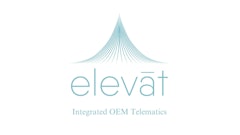
![Hd Hyundai Xite Transformation Booth Image[1]](https://img.oemoffhighway.com/files/base/acbm/ooh/image/2023/12/HD_Hyundai_Xite_Transformation_Booth_Image_1_.657a32d4218f2.png?auto=format%2Ccompress&fit=crop&h=135&q=70&rect=113%2C0%2C1600%2C900&w=240)


